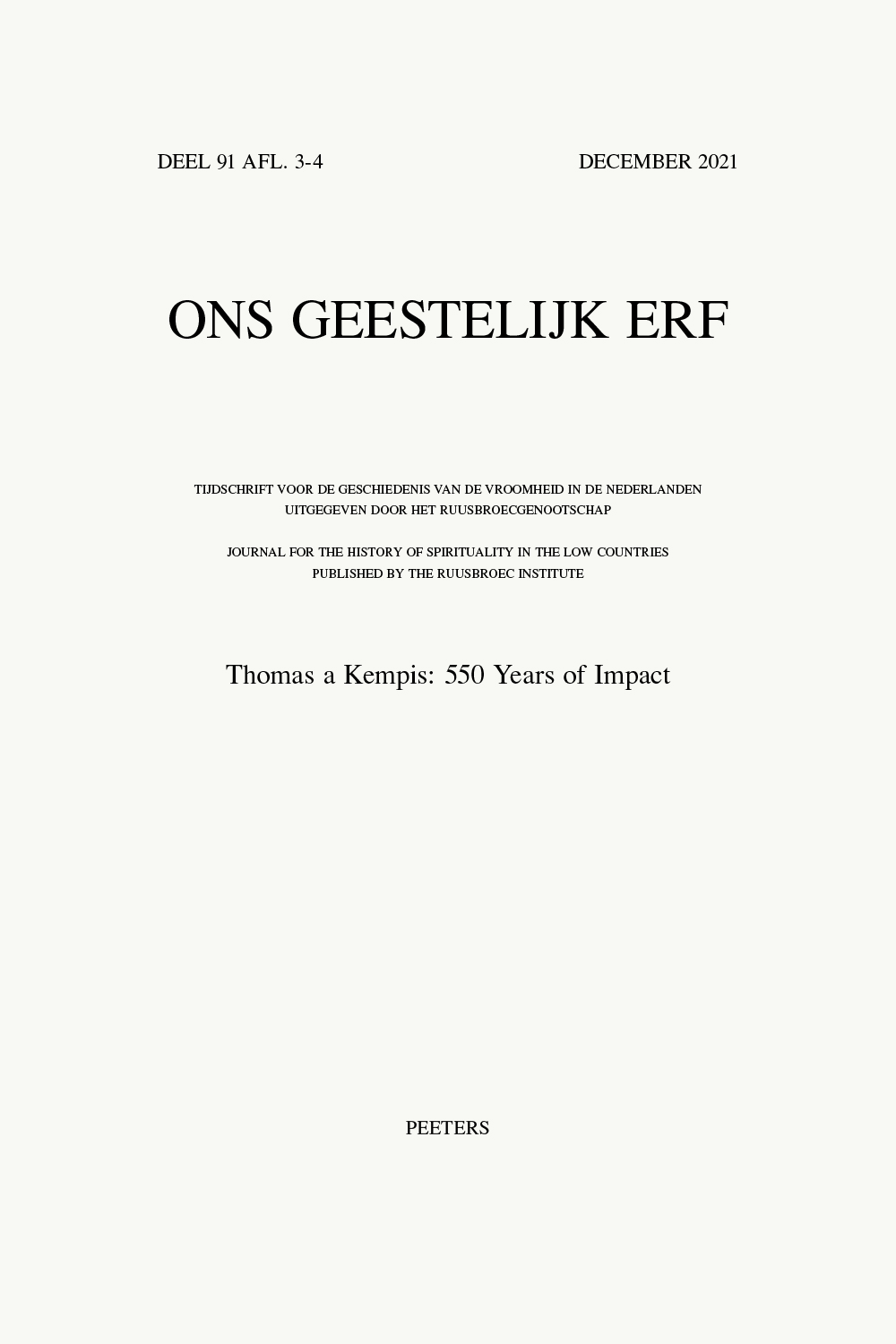 previous article in this issue previous article in this issue | next article in this issue  |

|
Document Details : Title: Volgens het boekje Subtitle: Gerard Leeus Nederlandstalige editie van de Meditationes de vita et passione Jesu Christi Author(s): DLABAČOVÁ, Anna Journal: Ons Geestelijk Erf Volume: 91 Issue: 1-2 Date: 2021 Pages: 109-157 DOI: 10.2143/OGE.91.1.3289292 Abstract : This essay explores the Dutch recension of the richly illustrated Latin Meditationes de vita et passione Jesu Christi, a weekly excercise that went directly into print and was first published by Gerard Leeu in Antwerp on 10 February 1485. The Dutch text appeared about two years later, on 5 January 1487. Both the Dutch and the Latin texts contain at their core the sixty-five prayers on the Passion (from Christ’s agony in the Garden of Gethsemane to his funeral) from Jordan of Quedlinburg’s Meditationes de passione Christi (1365). Each of the prayers is accompanied by a woodcut, which in itself was an important innovation and departure from previous manuscript transmission that did not systematically illustrate each prayer. Furthermore, the compiler of the weekly exercise used Jordan’s prayers as his reference point, and divided them over five days of the week (Monday-Friday). He added other (meditative) texts and prayers so that readers are presented with an exercise for each day of the week that permits them to meditate on the entire life of Christ (from Mary’s visit to Elizabeth to Mary’s Ascension), as well as on other subjects, such as the four last things (death, judgment, hell, heaven) throughout the week. Here, images are also used as an integral part of the meditative exercise. The printed text might have been based on a similar exercise found in a manuscript from South-Holland, currently held at The Hague, Royal Library, 133 H 1. Moreover, the Dutch edition of 1487 is not just a translation of Leeu’s earlier Latin edition: apart from changes to its physical appearance, the text has undergone a significant reworking as well. The meditations to be performed before lunch, before and after dinner, and before going to sleep, are longer and much more detailed than in the Latin edition, allowing inexperienced readers to use these ‘intimate scripts’ in their meditations. Leeu’s parallel editions of the Latin and Dutch Meditationes thus provided various groups of readers (Latinate, non-Latinate, those familiar with meditative techniques and the Gospels, and those who were not) to participate in affective meditation on Christ’s life and to deepen their spiritual lives in a similar fashion despite the differences in their background. |
|
